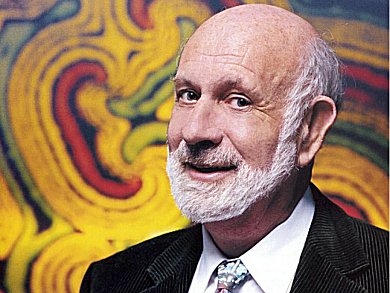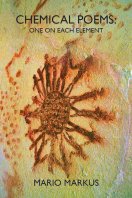To date, 118 chemical elements have been found. Professor Mario Markus, Max Planck Institute for Molecular Physiology, Dortmund, Germany, takes a look at each element, presenting a poem based on its natural properties along with a scientific overview of each element.
All 118 poems – as well as some poems about elements that only exist in theoretical simulations – are published in the book Chemical Poems: One On Each Element by Mario Markus. ChemViews magazine will publish a selection of these poems over the next months.
Tin |
Tin |
|
|
Silvery-gray metal. Density: 7.27 g/cm³. The name comes from the Anglo-Saxon tin, the symbol Sn from the Latin stannum, meaning tin. Bronze, which is copper plus tin, was decisive in human history, already 2000 years before the start of the Iron Age. The Colossus of Rhodes, a bronze statue one hundred feet high, which was destroyed by an earthquake in 224 B.C., was one of the “seven wonders of the world”. From ancient Egypt to the Middle Ages kitchen utensils made of tin were commonly used. Bronze and pure tin were also found in the Inca-city Machu Picchu in Peru. Bending a tin bar one hears a sound called “tin cry”. As in the case of cadmium, this “cry” is produced by the friction of the internal crystal faces with each other [1]. Tin is used in organ pipes, rendering a particularly clear sound. To produce flat glass, liquid glass is allowed to float on liquid tin and, since glass solidifies first, it can be removed from the molten tin [2]. At low temperatures, tin breaks down into powder,194 something which has had a dramatic impact in cold winters: the destruction of military uniform buttons, for example, in Napoleon’s troops, during the Russian campaign, as well as of pipe organs, for example, in the Maarja-Magdalena church in Estonia in 1890. It also affected polar expeditions, including that of Robert Falcon Scott’s effort to reach the south Pole in 1912, where the tin-containing welds of tanks carrying fuel became dust, leaving them empty. One speaks of “tin pest” since the break-up is accelerated by contact with objects already destroyed in this way. Bolivia was a major producer of tin in the twentieth century [4]. Its production mainly enriched an elite of tycoons (three families, in fact), while workers were kept “happy” with coca leaves. This deplorable situation went on until the collapse of the tin market in 1980 [5]. [1] J. Harris, Materials World 2002, 10, 57. |
Clear tones Do not lay hands on Tin, |
Professor Mario Markus, Max Planck Institute for Molecular Physiology, Dortmund, Germany.
www.mariomarkus.com
Chemical Poems – One On Each Element,
Mario Markus,
Dos Madres Press 2013.
ISBN: 978-1-933675-98-5
Perfectbound, 308 pages, English, $30

Interview with Mario Markus: Poetry and Chemistry,
ChemistryViews 2013.
https://doi.org/10.1002/chemv.201300010
The poems have also been published in German in:
- Chemische Gedichte,
Mario Markus,
Shaker Media, Herzogenrath, Germany, 2011.
ISBN: 978-3868587012
See all poems published so far by ChemistryViews.org.





